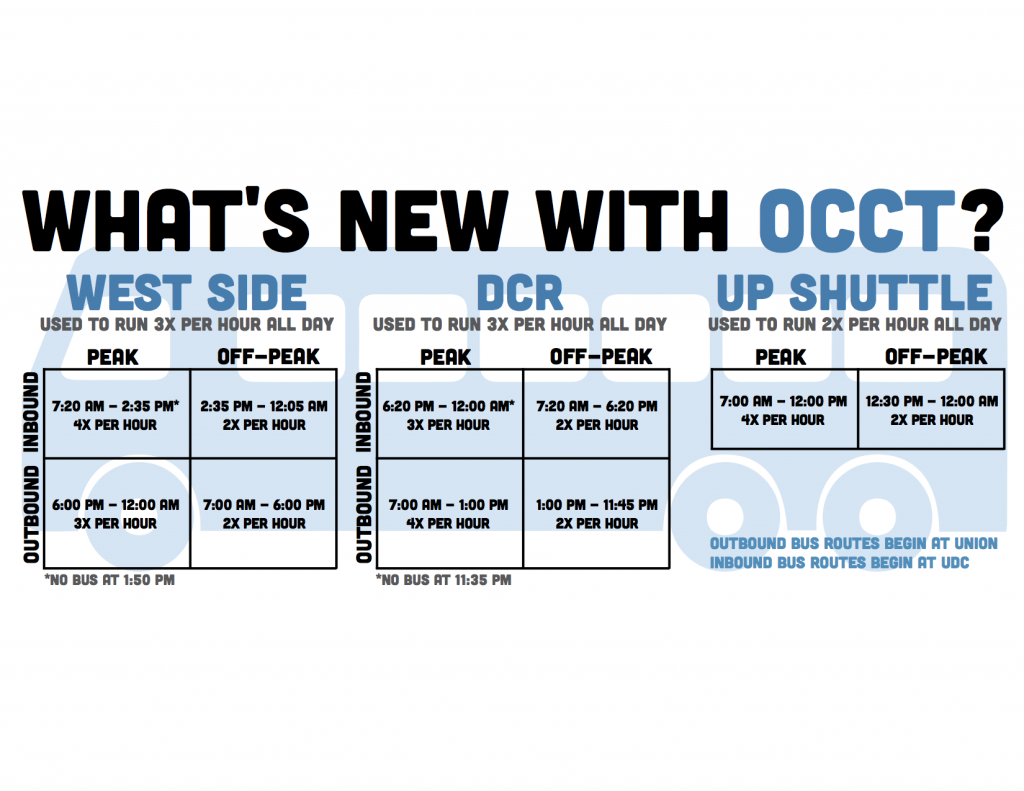
Students returning from the Rosh Hashanah break are coming back to a new OCCT bus schedule.
While the new inbound-outbound structure will remain the same, according to Student Association President Alex Liu, West Side and DCR buses will be allocated five extra minutes to address the realities of the routes on which they run.
“The idea for the schedule is to add some time to the routes in order to adjust for the increased traffic both on campus and off campus,” said Liu, a senior majoring in philosophy, politics and law. “That gives the buses more time to account for unexpected delays and just more time for the route.”
In response to a growing student population in Binghamton’s West Side, Liu said that buses following the route would come every 15 minutes, instead of every 20, during peak hours.
“We hope that will solve the issue of all the students wanting to get on campus during the day, and all the students wanting to get off campus at night,” he said.
DCR buses will continue to run on Leroy Street instead of Riverside Drive until construction is completed.
Changes will be available on OCCT’s Twitter page, but because the bus planners have not received exact dates for construction the permanent schedule will not be altered.
Tim Redband, OCCT public relations coordinator and a senior majoring in philosophy, politics and law, said that the schedule would not change again this semester.
“This will be the last change,” Redband said. “Once the construction is done, we’ll take a look at going back to the schedule that we originally had for the spring.”
However, Redband said that OCCT could adapt further to ensure students had reliable service in the mornings.
“We will see what’s going on,” Redband said. “If we’re finding that at the Downtown Center we’re leaving too many people behind, we would send a chase bus behind the DCR inbound so that we would pick up people going to class.”
According to Liu, OCCT also faces long-term challenges as the student population increases on and off campus.
“We see that as we’re driving down the West Side, we’re filling up a lot quicker,” Liu said. “And the same goes for on campus. On-campus traffic has increased a lot too, vehicular and pedestrian. We have buses going along the Brain but being stuck as pedestrians go back and forth across the Brain.”
Next semester OOCT will add GPS to all of its fleet in order to track student use, according to Liu. Unlike previous scanners, this system was created by a private contractor and will allow students to tap their IDs instead of swiping.
“It will track students getting on, getting off, and know exactly where students are living and know where the heavy traffic is in terms of ridership,” Liu said.
According to Redband, though, the primary focus was immediate need.
“Basically we’re concerned about getting kids to class, we don’t want to leave people behind in the morning,” he said.


